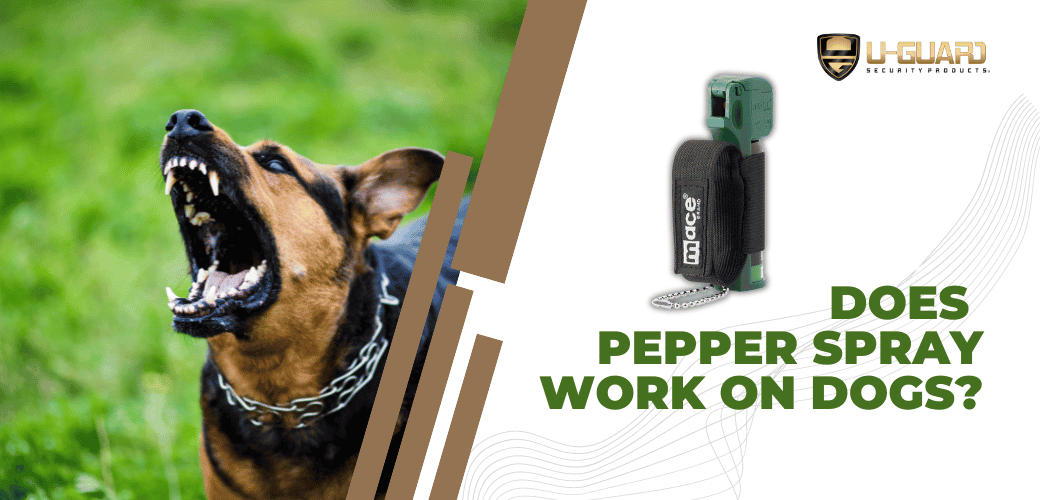Have you ever wondered if stun guns can work through clothing? In this blog post, we will look into the effectiveness of using a direct contact stun gun on a clothed assailant and explore the best practices for maximizing its impact. And what you need to know to get the most out of your stun device if it needs to be used through clothing. Let’s get started, and get some answers to that question, do stun guns work through clothing?
Do Stun Guns Really Work Through Clothing?
Can a direct contact stun gun penetrate, and transfer its power through the layers of an attacker’s clothing? I get it, the idea of being in a situation where you need to use a stun gun is already nerve-wracking enough without having to worry about whether or not it’s going to work because your assailant decided to dress in layers.
So, here’s the scoop. Stun guns and tasers are actually designed with the idea in mind that they need to be effective regardless of whether someone’s wearing a summer tee or a bulky winter jacket. The deal with these devices is that they don’t politely knock on the door (or in this case, clothing) asking to be let in; they kick it down. The electric shock they deliver doesn’t just stop and say “oh, excuse me, is that a cotton blend?” It powers through most types of clothing to reach the attacker.
Now, you might be picturing this dramatic showdown where your stun gun faces off against a leather jacket. And while it’s true that some materials might pose more of a challenge, the majority of everyday clothes won’t stop a stun gun from doing its job. The technology behind these gadgets ensures that the electric shock delivered is strong enough to penetrate through layers and disrupt the attacker’s muscle control, making them think twice about their choice to harm.
So, if you’ve been eyeing your stun gun, wondering if it’s only good for beach days and not the winter season, rest easy. These devices are made to be a reliable line of defense, clothing or not. Just focus on handling it correctly and aiming for those key spots where it’ll make the most impact.
The Best Spots to Aim for Maximum Impact
Let’s talk about the best locations and where to contact the body if you need to use your stun gun. You’ve got your stun gun in hand, the adrenaline’s pumping, and you’re ready to defend yourself. But where do you zap them for that oh-so-important maximum impact? Aim for the sweet spots—those places where even a well-dressed attacker is going to feel the stun and try to be in contact with exposed skins or lightly layered areas of the body if possible.
First up, we’ve got the neck. It’s usually less protected and can be a game-changer when you’re looking to send a message that you’re not to be trifled with. Then, there’s the groin area—no one, and I mean no one, can remain composed after a stun gun greeting to the nether regions. And don’t forget about the underarms; it’s like the VIP section for stun gun effectiveness, thanks to the thinner clothing and closer proximity to the body’s nerve centers.
But here’s a pro tip: it’s not just about choosing your target. It’s also about how you strike. You want to be swift, sure, and have that element of surprise on your side. Your assailant isn’t going to give you an engraved invitation to zap them. So, practice your quick draw and aim for those areas where you can catch them off guard and deliver a shock that’s going to have them questioning all their life decisions up to that moment.
Remember, the goal here isn’t just to use your stun gun; it’s to use it in a way that maximizes your safety and minimizes the threat. Knowing where to aim is half the battle. The other half? Having the confidence and readiness to take action when it counts. So, keep these prime spots in mind, stay prepared, and let your stun gun do the talking when words just won’t cut it.
Understanding the Power Behind the Zap
Alright, let’s break down what’s really going on under the hood—or should I say, under the shirt? When you’re holding a stun gun, aiming at an attacker swathed in their winter finest, you might wonder, “How does this thing pack such a punch?” Well, my friend, it’s all about the magic combo of milliamps and voltage.
You see, stun guns are like the rock stars of the self-defense world, with voltage being the stage dive and milliamps being the guitar solo that really brings the house down. The voltage is your key to getting past those pesky layers of clothing. Think of it as the knock on the door, or more accurately, the battering ram that lets the stun gun’s power into the show. But it’s the milliamps that do the real work once they’re in. This is where the stun gun sings its heart out, delivering that shockwave of energy that tells the attacker’s muscles to take five. Learn more about how stun guns work.
But here’s where it gets interesting. It’s not just about having the highest voltage or the craziest amount of milliamps. If your stun gun is all voltage and no milliamps, you might get through the clothes but not deliver enough of a punch to really make your point. And if it’s all milliamps and no voltage, you might as well be trying to serenade the attacker because you’re not getting through those layers.
The sweet spot? A stun gun that harmonizes the right amount of voltage to break through the wardrobe barrier, with enough milliamps to turn that attacker’s bad day into a no-good, very bad day. That’s the duo that disrupts muscle function and makes your stun gun the lead singer in the band of self-defense. So when you’re picking your personal electric guardian, remember: it’s not just about the numbers—it’s how they work together to keep you safe.
The Voltage vs. Milliamp Debate
Alright, so we’ve reached the point where we gotta hash out the nitty-gritty of this voltage versus milliamp showdown. It’s like trying to pick your favorite band member: do you go for the flashy lead guitarist (voltage) who makes sure the band gets noticed, or do you stick with the soulful bass player (milliamps) who might not be as flashy but definitely brings the depth? It’s a tough call, right?
On one hand, high voltage in a stun gun is your golden ticket through the door—or in this case, through the layers of your attacker’s winter ensemble. It’s what makes your stun gun say, “Excuse me, coming through,” allowing the current to reach where it needs to go. Now, flip the script, and you’ve got milliamps. These little guys might not seem like the life of the party at first glance, but boy, do they bring the punch. Once the voltage has bulldozed its way through, milliamps are what actually do the heavy lifting, telling your assailant’s muscles to go on a quick vacation.
Here’s the kicker, though. Leaning too hard on one without enough of the other is like having a rock concert without a sound system or a guitar. Sure, you’ve got the pieces, but it’s not going to leave anyone stunned (pun intended). Finding that stun gun that strikes a perfect harmony between voltage to breach the barriers and milliamps to deliver the “please sit down” message, that’s where your best bet lies.
It’s not about picking sides in this debate; it’s about understanding how each player contributes to the band’s success. The goal? Make sure your personal safety concert leaves the assailant knowing they messed with the wrong headliner.
Practical Tips for Using Your Stun Gun Effectively
Alright, let’s shift gears and chat about turning theory into action with your stun gun. Picture this: you’re face-to-face with a threat, and it’s go-time. Your stun gun isn’t just a fancy flashlight—it’s your ticket to safety. But here’s the thing, it’s not just about having it; it’s about knowing how to wield it like the superhero you are.
First off, keep your cool and grip that stun gun with confidence. A shaky hand won’t do you any favors. Now, you’ve already learned that aiming for the neck, underarms, or the grand prize, the groin, can be game changers. But let’s add a little more to that strategy. Movement is your friend. Don’t be a sitting duck. Move around, make it harder for your attacker to predict your next step. This isn’t just good for your defense; it gives you a better shot at hitting those sweet spots.
But wait, there’s more. Quick reflexes are key. Practicing the draw and aim can make the difference between a close call and a sigh of relief. Set aside some time to get familiar with how your stun gun feels in your hand, how it operates, and how quickly you can get it into action mode. Remember, in the heat of the moment, it’s going to feel a hundred times faster, so muscle memory is your best friend.
Lastly, always be mindful of your surroundings. A retreat might be a better option if it’s safe to do so. Your stun gun is a powerful ally, but your brain is the ultimate tool in your arsenal. Stay sharp, stay safe, and let that stun gun be the backup singer to your lead vocals in the song of self-defense.





